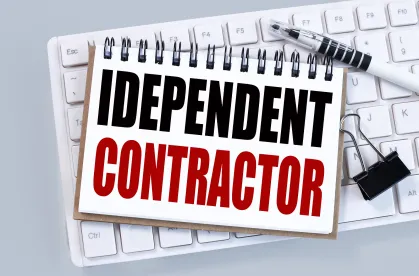Here’s the Scenario: After months of working with a new national developer (and providing hours of unreimbursed value engineering), you get the draft prime contract and see that the named “owner” will not be the hugely successful developer, but a specially created “limited liability company” that’s sole “asset” is the land upon which the project will be built. The developer has also shopped around to obtain investors for this project, and the LLC is made up of a series of limited liability companies, limited partnerships, etc. The project is also being financed, so that the sole owner “asset” is subject to a deed of trust/mortgage by the lender that will take precedence over any contractor lien claim. While there’s been zero discussion or mention of this “owner,” the pressure is on. What options do you have?
A Warning
Those old timers who have been around recall the series of failed projects and bankruptcies that followed the 2008-2010 financial meltdown. This put many construction companies out of business while the lenders foreclosed, wiped out any liens, and then sold the projects without having to pay a dollar to the construction companies that built the half-completed projects. Any non-escrowed withheld retainage is gone. Always, always, know that there is a reason a “LLC” is called a “limited liability” company.
So, what can a prime contractor do?
-
Demand and ask for evidence of financing whether or not the owner is or is not financing the project. Some owners do not need financing. If using an AIA form prime contract, remember that the standard A201 General Conditions (Article 2.2) states that upon a written request, the owner is required to provide “reasonable evidence” that the owner has made “financial arrangements” to fulfill the owner’s obligations. And the contractor also has no obligation to “commence the work” until such information is provided. If the AIA form is not used, include something similar in your prime contract.
-
Don’t sign the contract until you have some reliable information about financing. For financed projects, you have some leverage. Typically, the owner/developer is ready to finalize the plans, get the prime contract signed, close the loan, and break ground. And to close the loan, it needs an executed prime contract. At this late date, it’s really hard for an owner to then find another contractor. Use that leverage if necessary.
-
Protect withheld retainage: Many states (like Tennessee) have mandatory limitations on the amount of retainage that can be withheld (ranging from 5% to 10%), and for a long project, that’s a lot of delayed profit. Know the retainage laws (and penalties) if the retainage is not escrowed throughout the project, which is mandatory in some states (like Tennessee). Try to have the owner even agree NOT to withhold retainage, which would allow a contractor to in turn have very, very happy subcontractors.
-
During the course of the project, track payments and don’t accept promises of payment. No matter the explanations, strictly adhere to the payment terms and conditions, especially for deadlines for notices for claims. Know deadlines for lien notices. It’s also vital to carefully examine those typically required partial lien releases that are required to be provided with pay applications: Make sure that any and all claims or proposed change orders are carved out and preserved. You better believe that after a dispute or termination, without making these efforts, these lien waivers will be thrown back in the contractor’s face by the owner or the lender.
-
Before you exercise any default, threats to stop work, or initiate ADR proceedings, make sure that there not any other executed documents that may have been required by any lender. My previous post discussed the issues with the demand that the contractor execute the typically required “Consent and Assignment Agreement” in favor of the lender.
The Bottom Line
In 98% of your projects, contractors will get paid, which will in turn allow subcontractors to get paid, and the work will be done properly and on time. Any issues are worked through in good faith. The “we are all a team” attitude should prevail throughout a successful project, and everyone should pledge to work together again. But remember “who” you are contracting with, and it’s not the great developer. If there are issues and the developer decides to tank the project, or has issues with the lender, you could be holding the bag and face potential liability from subcontractors. “Know thy owner” is a mantra that should be a part of every internal discussion before embarking on a new project.




 />i
/>i

